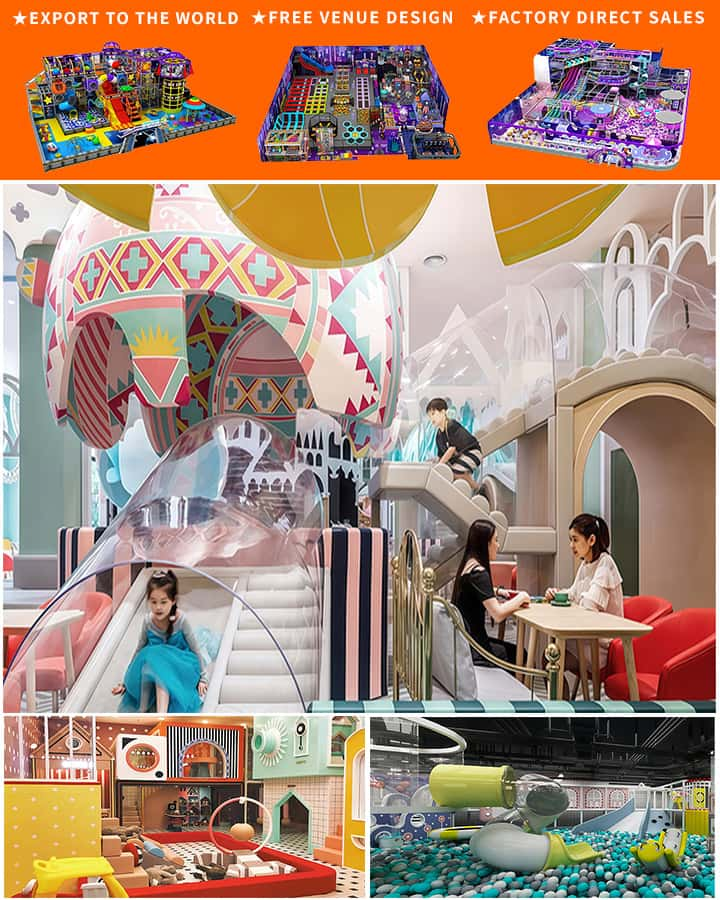In recent years, indoor playgrounds have become increasingly popular as they provide a safe and enjoyable environment for children to play, regardless of weather conditions. The design of indoor playground equipment is crucial in ensuring that these spaces are not only fun but also safe and stimulating for kids of all ages. This article delves into various innovative design ideas for indoor playground equipment, providing a detailed guide available in PDF format. Whether you’re an entrepreneur looking to start an indoor playground or a designer seeking fresh inspiration, this comprehensive resource offers valuable insights.
Importance of Thoughtful Design
The first step in creating an exceptional indoor playground is understanding the importance of thoughtful design. Unlike outdoor playgrounds, indoor ones must cater to year-round usage, making durability and safety paramount. Additionally, the aesthetic appeal and functionality of the equipment can significantly influence a child’s experience. A well-designed indoor playground should:
- Ensure Safety: All equipment must meet stringent safety standards to prevent injuries.
- Promote Physical Activity: Encourage children to be active through various forms of play.
- Stimulate Imagination: Foster creativity and cognitive development through diverse play elements.
- Be Inclusive: Offer accessible and enjoyable activities for children of different abilities.
Key Design Elements
1. Modular Play Structures
Modular play structures are versatile and customizable, allowing for a wide range of activities within a single unit. These structures can include climbing walls, slides, bridges, and balancing beams. The modularity of these units allows for easy reconfiguration, keeping the playground engaging and adaptable to different age groups.

2. Interactive Digital Elements
Integrating interactive digital elements can elevate the traditional playground experience. Touchscreen panels, augmented reality (AR) games, and interactive projections can make playtime educational and immersive. These digital components should be designed to withstand heavy use and be easy to maintain.
3. Soft Play Areas
For younger children or those requiring a softer environment, soft play areas are essential. These areas often feature foam flooring, cushioned climbing frames, and ball pits. The materials used should be non-toxic and hypoallergenic, ensuring a safe space for toddlers and young children.
4. Educational Zones
Including educational zones within the playground can combine fun with learning. Features like puzzle walls, alphabet mats, and themed activity stations can enhance cognitive development while children engage in physical play. These zones can be tailored to specific educational themes such as nature, mathematics, or science.
5. Sensory Play Equipment
Sensory play equipment is designed to stimulate children’s senses and promote physical development. Items such as textured climbing surfaces, light-up elements, and sound-producing features can create a multi-sensory experience that captivates and educates simultaneously.
Design Considerations
Material Selection
Choosing the right materials is critical for both safety and longevity. Non-toxic, durable plastics, soft foams, and high-quality metals should be prioritized. It’s also important to select materials that are easy to clean and maintain, given the high traffic in indoor play areas.
Space Utilization
Efficient use of space is vital in indoor playgrounds. Multi-level structures and compact designs can maximize floor area without compromising on the variety of activities. Consider incorporating vertical elements to create more play opportunities within a limited footprint.
Age Appropriateness
Different sections of the playground should cater to varying age groups. Toddler-specific areas with smaller, softer equipment can coexist with more challenging structures for older children. Clear signage and color-coded zones can help parents easily identify suitable areas for their kids.
Accessibility
Inclusive design means ensuring that children with disabilities can enjoy the playground too. Ramps instead of stairs, transfer stations, and wheelchair-accessible play equipment are essential components of an inclusive indoor playground.
Conclusion
Creating an engaging and safe indoor playground requires careful consideration of design elements that cater to children’s physical, cognitive, and sensory development. By incorporating modular structures, interactive digital elements, soft play areas, educational zones, and sensory play equipment, designers can craft environments that are both fun and enriching. This article serves as a comprehensive PDF guide for anyone involved in the planning and execution of indoor playground projects, offering design ideas that balance innovation with safety and inclusivity. Download the full guide now to transform your vision into a vibrant, dynamic indoor playground that delights children and peace of mind for parents.




